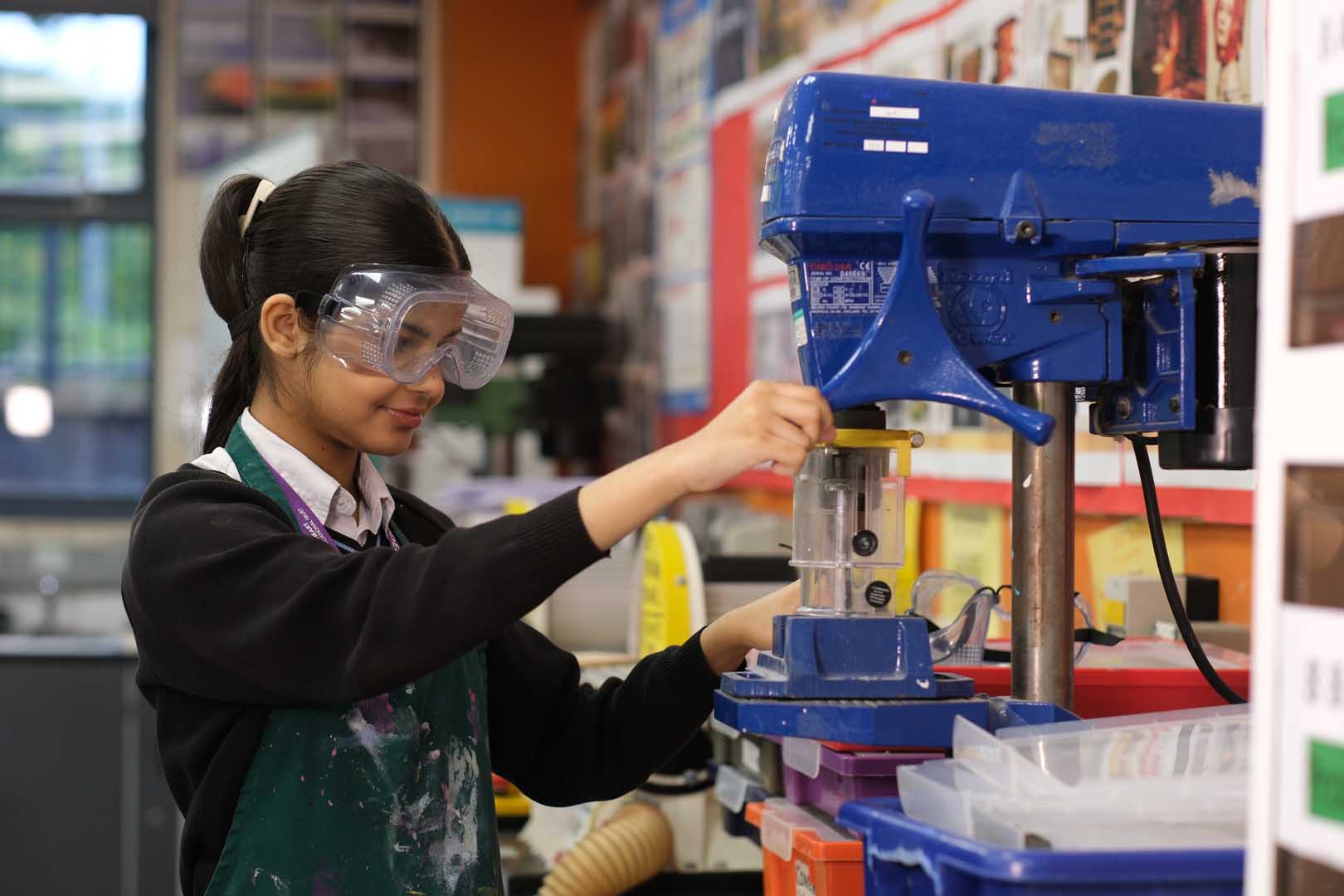
Design Technology
DESIGN AND TECHNOLOGY - PRODUCT DESIGN (GCSE)
Students follow the GCSE Design and Technology AQA specification. 50% of the course is based on theory of core, specialist and designing and making principles, the other 50% is a Contextual Challenge which starts in June of the first year of study. Students choose a brief that interests them from a choice of three.
EXAMINATION BOARD AQA
SPECIFICATION CODE 8552
CURRICULUM CONTENT
- Core technical principles
- Specialist technical principles
- Designing and making principles
ASSESSMENT
Exam breakdown: 50% 35 hrs coursework, 50% 2- hour exam.
In addition:15% of the exam will assess maths and at least 10% of the exam will assess science.
The teacher will provide any necessary resources to assist with theory, coursework including the practical outcome and exam preparation. AQA text books, revision guides and past exam papers. However-quizzes and other useful information will be available on line.
Q-How is the exam structured?
- Section A-Core technical principles (20 marks) A mix of multiple choice and short answer questions assessing a breadth of technical knowledge and understanding.
- Section B-Specialist technical principles (30 marks) and one extended response to assess a more in-depth knowledge of technical principles.
- Section C- Designing and making principles (50 marks) a mix of short answer and extended response questions.
Students will be set ‘low stakes’ written tests throughout their first year to allow them to develop confidence and check their theoretical learning in preparation for the written exam in their final GCSE year. Practical skills and coursework developed will be assessed regularly over the course of study to support their progress and learning. One to one tutorial will be given to students to discuss effective progress and development.
Assessment criteria for the Non- Exam Assessment Portfolio and 3D product:
- Identifying and investigating design possibilities (10 marks)
- Producing a design brief and specification (10 marks)
- Generating design ideas (20 marks)
- Developing design ideas (20 marks)
- Realising design ideas (10 marks)
- Analysing and evaluating (15 marks)
Q-What should be included in the final portfolio?
Reviewing contextual challenges, analysing primary/secondary research, design brief and design specification, initial design ideas, refinement and development of ideas, prototyping, evaluative decision making, high quality 2D/3D images of proposals, planning/timelines, modifications and evaluations, final prototype of finished product.
EXTRA-CURRICULAR OPPORTUNITIES
These will be a workshop on specific elements of the course where outside agencies are used. This might be jewellery making or a workshop on iconic designers by the Leicestershire Museums Education team. Intervention runs for an hour after school on Thursday and opportunities to be ambassadors for the subject on open evening and options evening is useful for students to showcase their work and answer questions from prospective students. GCSE students will enter a competition with the Rotary Young Designers or Royal Society of the Arts (RSA) Pupil Design Awards.
PROGRESSION
Design and Technology students learn practical skills that feed into further study such as A levels in Design and Technology, Engineering, Architecture, Fashion and Textiles, Graphics and further education courses like hair and beauty, Veterinary training, surgeon and other careers requiring practical skills and dexterity including the building industry. Studying ‘Product Design’ could lead to a career working for large international companies such as Dyson, Tesla and Nasa.




